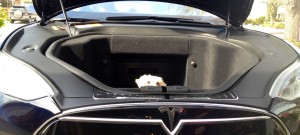OMG, the peeping bird. The Peeper. Sometimes called the FP. It starts at dawn in early April: PEEP PEEP PEEP. It only knows that one sound. And what it lacks in variety, it makes up for with volume. The PEEPs echo off the surrounding houses, giving them resonance. It is unbearably loud, particularly as I’m supposed to be sleeping.
Eventually, in late May, it is joined by another bird, affectionately known as the car alarm bird. Probably a mockingbird, its song is a car alarm: whoop whoop whoop, eee-urr-eee-urr, raaan-raaan-raaan. The first time, it sounded a lot like a car alarm. This year it sounds like a bird’s musical rendition of a car alarm, as though the birds have been playing telephone. It almost pretty, definitely funny. Still, not the way I want to wake up, especially with the FP playing rhythm peeps in the bird band.
Take that as part one of “necessity as a mom” and let’s move on to part two.
When I’m working, I like music but only boring music, music that doesn’t impinge on my consciousness. And I don’t like noise, whether it is the fan of my officemate’s computer or the dishwasher running or the peeping bird (less obnoxious in the office but still quite audible). I know I can buy white noise generator to block the sounds or get noise cancelling headphones. And sometimes I just turn up my music. Those solutions each have some definite drawbacks.
As I was reading about Bug Music and the author’s attempts to play an instrument in line with the symphony of cicadas or even harmonize with the beat box rhythm of a cricket, I started to wonder. Could I make a music generator that would listen to ambient noise and generate some cover for ongoing sounds?
Say the peeper is PEEPing. It is pretty rhythmic as well as tonal. So could my gadget make horn sounds to cover the peeper? And a soft swingy, jazzy riff underneath to maintain musicality? And when the whine of a fan is going, could it take that 8kHz whine and add some arpeggio to relieve the monotony?
There was an iphone app called Ambiance that would play a huge range of sounds- oceans or bird calls or whatnot. It was to help people relax. This would incorporate exterior sounds into that, layering them into the intended soundscape.
And the music generator would let you hear some sounds: a siren going by won’t mix in right away, the music generation processing would need time to acclimate to new environmental sounds.
Of course, I’m just blithely assuming music generation is easy, that improvising is trivial for a computer. But that is an exercise left to the implementer. Anyway, when you are done, please let me know so I can buy your gadget.


